Choosing the right furniture for your television can be confusing. You'll see terms like TV stand, entertainment center, and TV console used everywhere, but what's the real difference? Are they interchangeable?
They aren't. Each piece of furniture serves a distinct purpose, and picking the right one impacts your room's layout, storage, and overall style.
This guide will clear up the confusion. We will define what a TV stand, an entertainment center, and a TV console are, directly compare their pros and cons, and help you decide which is the perfect fit for your home.
What is a TV Stand?
A TV stand, at its core, is a simple, standalone piece of furniture built specifically to hold your television at a comfortable viewing height. Its primary goal is to provide a stable platform for your screen without occupying significant floor space.
Think of it as the minimalist solution. While modern designs often include a shelf or two for essential media devices like a cable box or gaming console, a TV stand's defining characteristic is its compact and straightforward design.
Key features of TV stands:
- Designed to support TVs at seated eye level
- Compact footprint that saves floor space
- Strong construction to handle the TV weight safely
- Limited storage for media devices and accessories
While older TV stands were just simple platforms, modern versions have evolved. Today's stands often include shelves or small cabinets for your cable box, gaming console, or streaming devices. Despite these additions, they maintain their space-saving design.

Pros and Cons of a TV Stand
Pros
- Saves space: Their compact design works perfectly in apartments or small rooms
- Budget-friendly: Costs much less than entertainment centers
- Quick assembly: Usually takes 30-60 minutes compared to hours for entertainment centers
- Easy to move: Many models include wheels or lightweight builds for easier repositioning
- Blends with decor: Simple design doesn't overwhelm your room's style
- Versatile use: Can be repurposed for other rooms later
- Better device ventilation: Open design helps electronics stay cool and prevents overheating
- Easy access for maintenance: Can quickly reach cables and connections when needed
Cons
- Limited storage: Not enough room for multiple devices or large collections
- Size restrictions: Can't safely support very large or heavy TVs
- Additional furniture needed: May need extra shelves for books or games
- Less sturdy: Not as stable as heavier entertainment centers
- Basic appearance: Lacks the impressive look of larger furniture pieces
What is an Entertainment Center?
An entertainment center is a large, multi-piece furniture system designed to be the central hub for all your media and decor. Unlike a simple TV stand, it doesn't just hold your TV; it surrounds it with a variety of storage options like cabinets, shelving, and drawers.
Essentially, an entertainment center is an all-in-one solution for your living room wall. It's built to house everything from your television and sound system to books, photos, and game collections, creating a single, cohesive focal point in the room.
The substantial size creates a focal point that defines your room. Entertainment centers shape how your space looks and functions, making a deliberate design statement through their scale.
Pros and Cons of an Entertainment Center
Pros
- Massive storage space: Multiple shelves, cabinets, and drawers keep all your media organized
- Hides the mess: Closed cabinets conceal clutter and keep your room looking neat
- Built-in cable management: Designed to hide wires and cords for a clean appearance
- Creates a focal point: Becomes the centerpiece that anchors your living room design
- Display opportunities: Plenty of space for books, photos, and decorative items
- Makes large rooms cozy: Fills empty wall space and helps define the area
- Protects equipment: Closed storage keeps devices safe from dust and curious children
Cons
- Takes up lots of space: Can overwhelm small rooms and make them feel cramped
- Expensive investment: Costs significantly more than basic TV stands
- Hard to move: Heavy construction means it stays where you put it
- Complex assembly: May take several hours or require professional installation
- Can look dated: Large furniture pieces are harder to update with changing styles
- Blocks natural light: Tall units can darken rooms by covering windows
- Difficult maintenance: Hard to clean behind and underneath due to size

What is a TV Console?
You'll often hear the term "TV console" or "media console," which can add to the confusion. So, what is a TV console and how does it differ from a TV stand?
A TV console is a long, low-profile cabinet-style piece of furniture that serves a similar purpose to a TV stand but emphasizes storage more.
While a TV stand can be a simple open-shelf design, a TV console is defined by its enclosed storage, typically featuring cabinet doors and sometimes drawers.
It sits lower to the ground than traditional cabinets but offers significantly more storage than a basic TV stand, making it a stylish middle-ground option.
Key features of TV consoles:
- Long and low-profile design
- Emphasizes enclosed storage with cabinet doors
- Offers more storage than a TV stand but is less massive than an entertainment center
- Often has a more sophisticated, decorative look
TV Stand vs. Console vs. Entertainment Center: A Head-to-Head
Now that we've defined all three, let's compare them directly across the key factors that matter most. The best choice depends entirely on your specific needs for space, storage, budget, and style.
Space
TV stands shine in small spaces where every square foot counts. Entertainment centers need larger rooms where they can anchor the space without overwhelming it.
Wall-mounted TV units save floor space in tight areas. Entertainment centers can make small rooms feel cramped. Remember to consider viewing distance, too. You need adequate space between your seating and the screen for comfortable watching.
Storage Needs
Entertainment centers excel when you have extensive media collections, multiple gaming systems, or lots of equipment. Their ample shelves and cabinets keep everything organized. TV stands work perfectly for minimalist setups with just a streaming device and a few accessories.
Aesthetics
Entertainment centers command attention as dominant focal points that define your room. TV stands offer a more discreet approach, blending with existing decor instead of competing with it.
Durability
Solid wood pieces typically serve you for 10-15 years but need occasional polishing. MDF offers a budget-friendly option lasting 5-10 years. Glass surfaces look sleek but demand frequent cleaning to maintain their appearance.
Budget
TV stands fit most budgets, ranging from $50 to $250 for quality options. Entertainment centers represent larger investments, easily exceeding $800 for well-built pieces. The size and complexity justify the price difference.
Mobility
TV stands offer easy portability for renters or people who redecorate frequently. Entertainment centers function as heavy, semi-permanent fixtures that typically stay wherever you first place them.
Safety
Both options require safety awareness. Entertainment centers excel at concealing hazardous cables from curious children. However, any tall furniture poses tip-over risks. Always secure large pieces with wall anchors or anti-tip straps, especially in homes with children or pets.
TV Specifications
Verify weight capacity before purchasing anything. Your TV stand or entertainment center must support your specific TV's size and weight. Choose furniture with a width exceeding your TV's width for proper balance and visual appeal.
Assembly
TV stands typically feature a simple assembly you can complete alone. Entertainment centers often require multiple people or professional help due to their complexity and size.
FAQ: TV Stand vs Entertainment Center
What is the main difference between a TV stand and a TV console?
The main difference is storage. A TV stand is often a simple, open-shelf design focused only on holding the TV. A TV console is a long, low cabinet that always includes enclosed storage like doors or drawers, offering a middle ground in storage capacity.
Can I use a dresser as a TV stand?
While you can, it's not always recommended. Dressers may not be designed to support the weight and specific footprint of a modern TV, and they often lack proper ventilation for electronic devices, which can lead to overheating.
Is an entertainment center a dated look?
Not necessarily. While massive, traditional entertainment centers can look dated, modern designs are often more streamlined and modular. They can be a timeless way to create a focal point and organize a large room if chosen to match your home's decor.
Conclusion
TV stands are simple, compact furniture pieces that hold your television and a few devices. Entertainment centers are comprehensive wall units combining TV support with multiple shelves, cabinets, and storage compartments.
Your choice ultimately depends on your budget, available living space, and intended use. Consider these factors carefully before making your final decision.
If you're on a tight budget, Belleze offers stylish, high-quality TV stands at affordable prices. Our TV stands feature cable management, and some models include built-in LED lighting systems, adding bold style to any room. They're safe, sturdy, and easy to assemble—perfect for transforming your space without breaking the bank.
Read More:
Can You Use a Sideboard as a TV Stand?
Furniture Alternatives for TV Stands


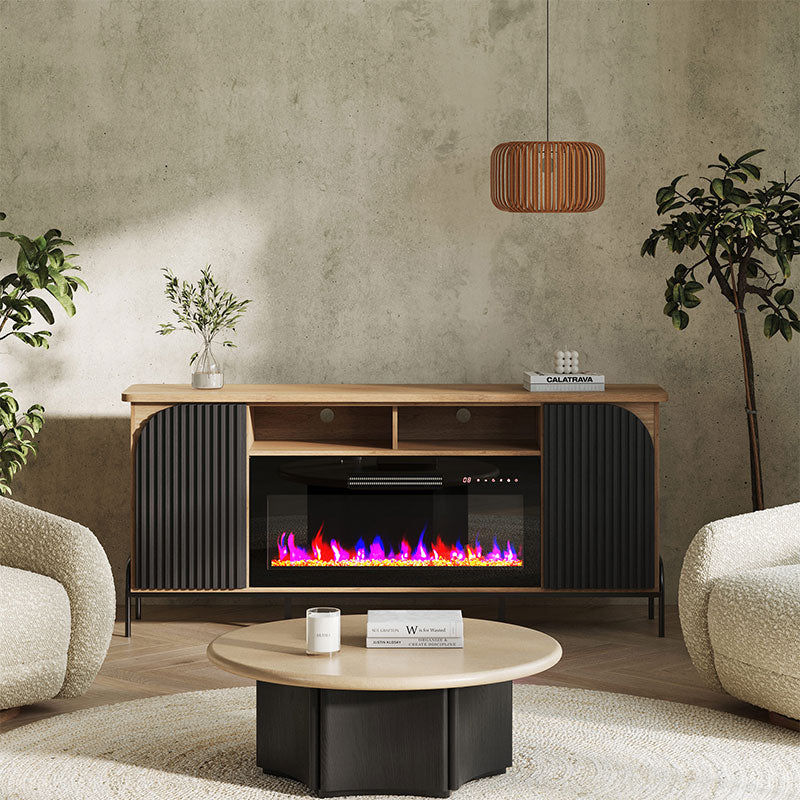
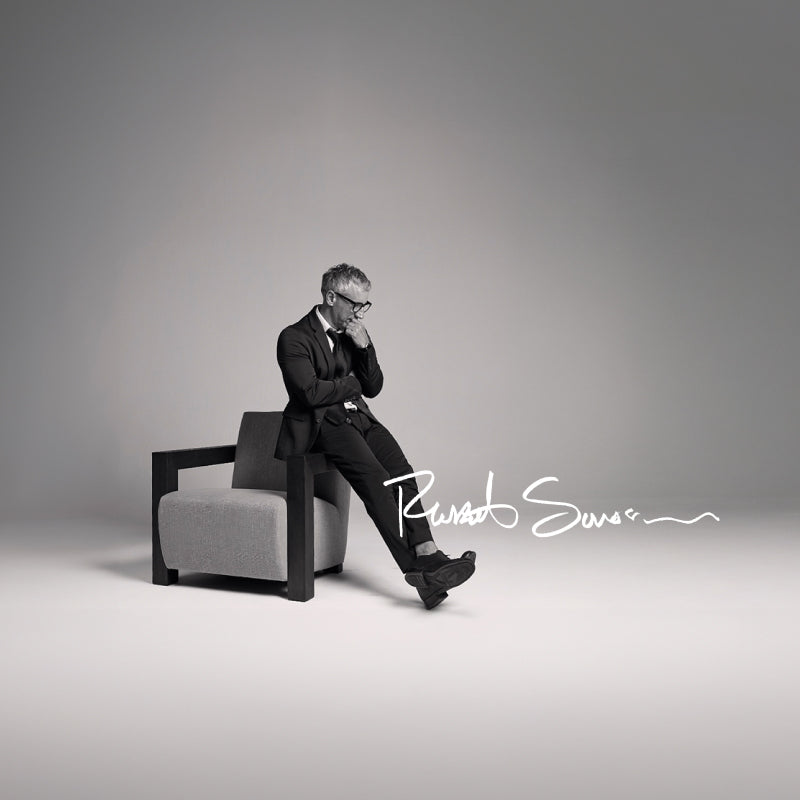
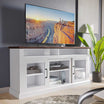
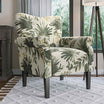
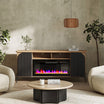

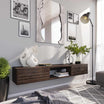
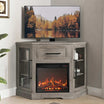

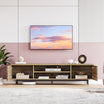
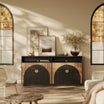
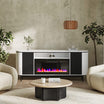
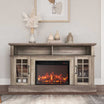
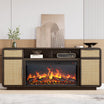
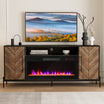
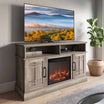
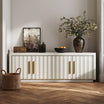
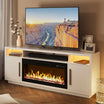
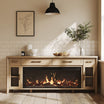
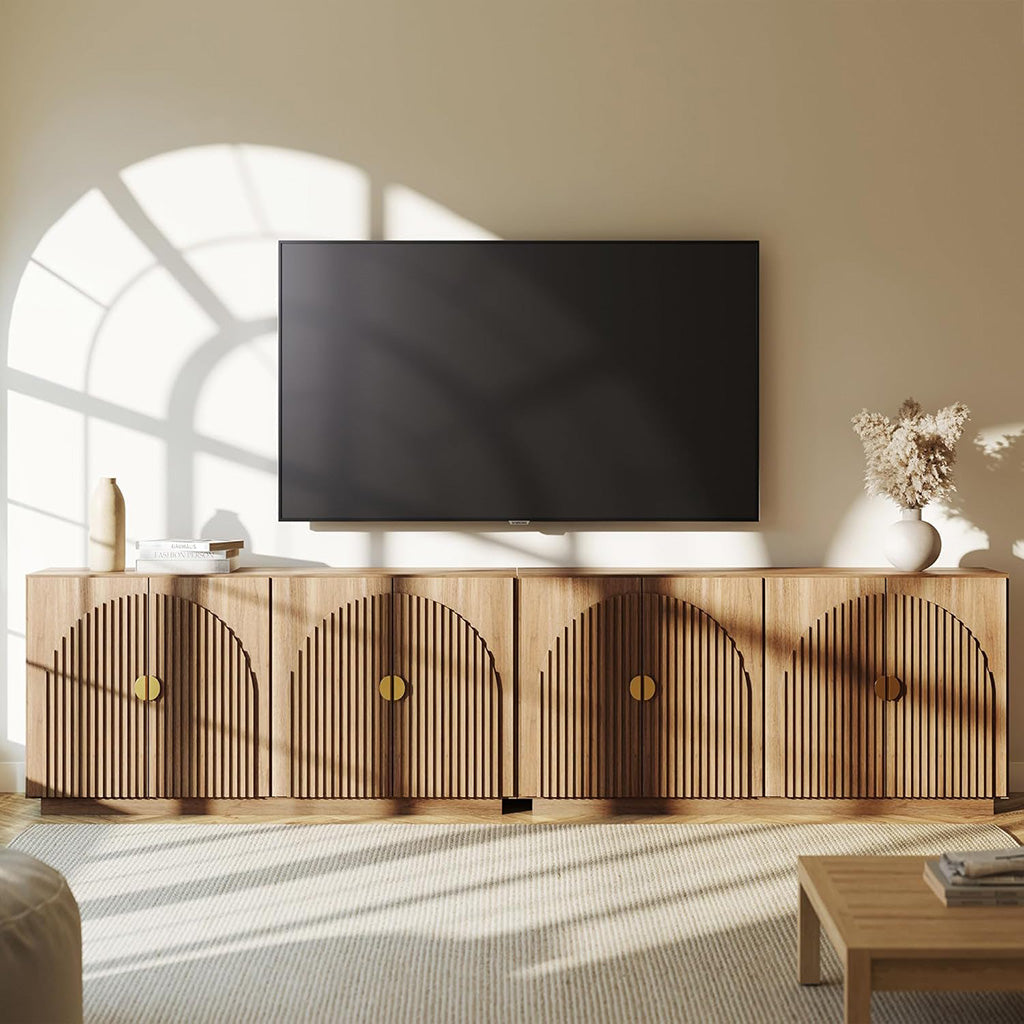



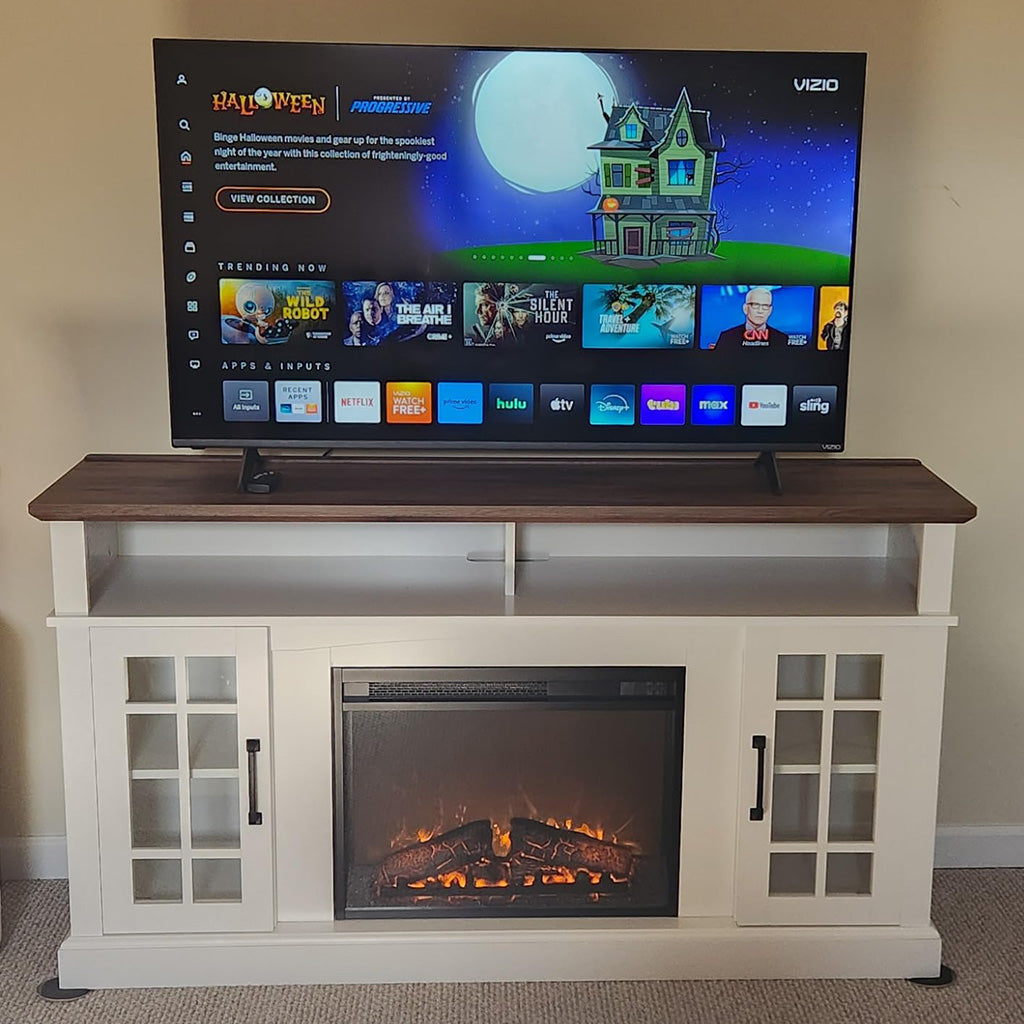
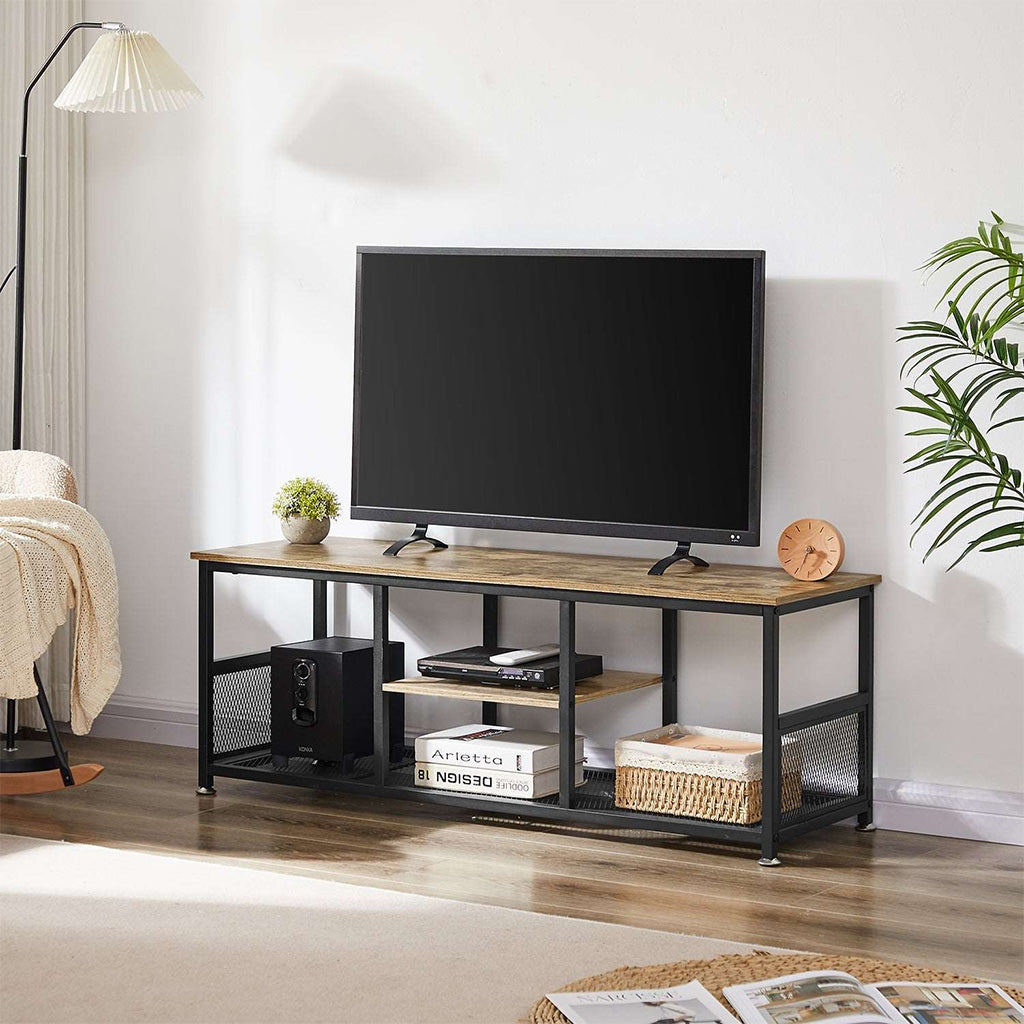
Leave a comment
This site is protected by hCaptcha and the hCaptcha Privacy Policy and Terms of Service apply.